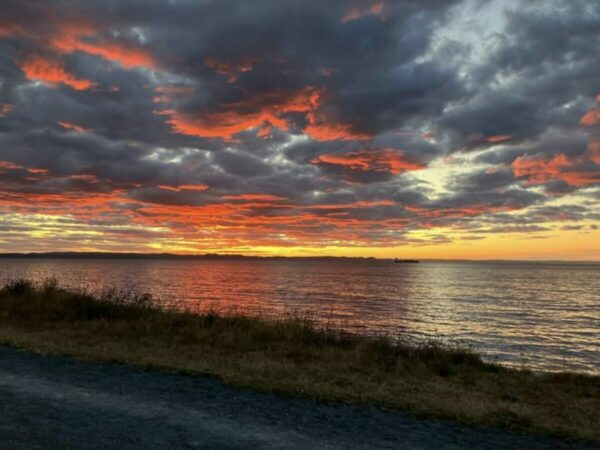Several shark species live in and visit Newfoundland waters (most commonly blue sharks), and sightings of big visitors like great whites have risen in recent years — but attacks on people are extremely rare. (Government of Newfoundland and Labrador)
Below is a quick, practical summary you can read in a minute.
Which sharks are found here
- Blue shark — the most common large shark seen off Newfoundland (shelf break, Grand Banks, Gulf). (Pêches et Océans Canada)
- Porbeagle, mako, spiny dogfish, black dogfish, basking shark, Greenland shark and occasional great whites are also recorded in the region. The provincial research summary lists a number of species that use these waters seasonally or year-round. (Government of Newfoundland and Labrador)
When & where you’re likely to see them
- Seasonality: Many species (blue, mako, great white visitors) are more common in spring–summer–early fall when waters warm and prey (like seals, mackerel, squid) move in. (Government of Canada)
- Hotspots: Shelf break, the Grand Banks, the Cabot Strait and the Gulf of St. Lawrence are common places for sightings. Fishermen also report sharks near productive fishing grounds. (Pêches et Océans Canada)
Are they dangerous to people?
- Risk is very low. While great whites and makos are large predators, fatal shark–human encounters in Atlantic Canada are extremely rare; recent research shows an increase in sightings as sharks follow prey north, but attacks remain uncommon. (AP News)
Practical safety tips (for swimmers, boaters & fishers)
- Avoid swimming alone, at dawn/dusk, or near seal colonies (sharks follow seals).
- Don’t swim with open wounds; avoid shiny jewelry that can attract fish.
- If you see a shark from shore or boat, calmly leave the water and report the sighting to local authorities/harbour master.
- When fishing: expect sharks to pilfer bait or take hooked fish; use stout tackle and follow safe-handling guidance if releasing.
(These are common-sense precautions used where sharks are present — they greatly reduce risk.)
Here are the most recent, verifiable shark sightings/detections near Newfoundland & adjacent waters (summer–early fall 2025):
- Great white “Baker” — Grand Banks (pinged Aug 1, 2025).
A transponder from an OCEARCH-tagged great white named Baker registered on the Grand Banks southeast of Trepassey. (VOCM) - Great white “Dold” — mouth of the St. Lawrence (pinged Aug 30, 2025).
OCEARCH data show Dold at the gateway to the St. Lawrence estuary — a detection that placed the animal very near the entrance to the estuary. (Shark Science Requins) - Public advisory — increased white shark presence in the Gulf of St. Lawrence (mid-Aug 2025).
Regional monitoring groups issued advisories in August noting an uptick in white-shark detections in the Gulf / St. Lawrence region. (Shark Science Requins) - Local coastal sightings reported (summer 2025).
Community posts and local outlets recorded individual shore/nearshore sightings (for example: a reported sighting off Old Perlican in July). These are typically photo/social reports rather than formal research pings. (Facebook) - Bigger trend — great whites and other large sharks moving north.
Multiple news/science outlets report an overall rise in great-white and large shark detections along the northern Atlantic coast (Maine → Nova Scotia → Newfoundland), tied to warming seas and recovering seal populations. (CBS News)
Practical note: researchers (OCEARCH and regional observatories) publish real-time ping maps you can watch, and local marine authorities sometimes post public advisories when detections occur. OCEARCH’s tracker and the St. Lawrence Shark Observatory pages are good real-time sources. (OCEARCH)
